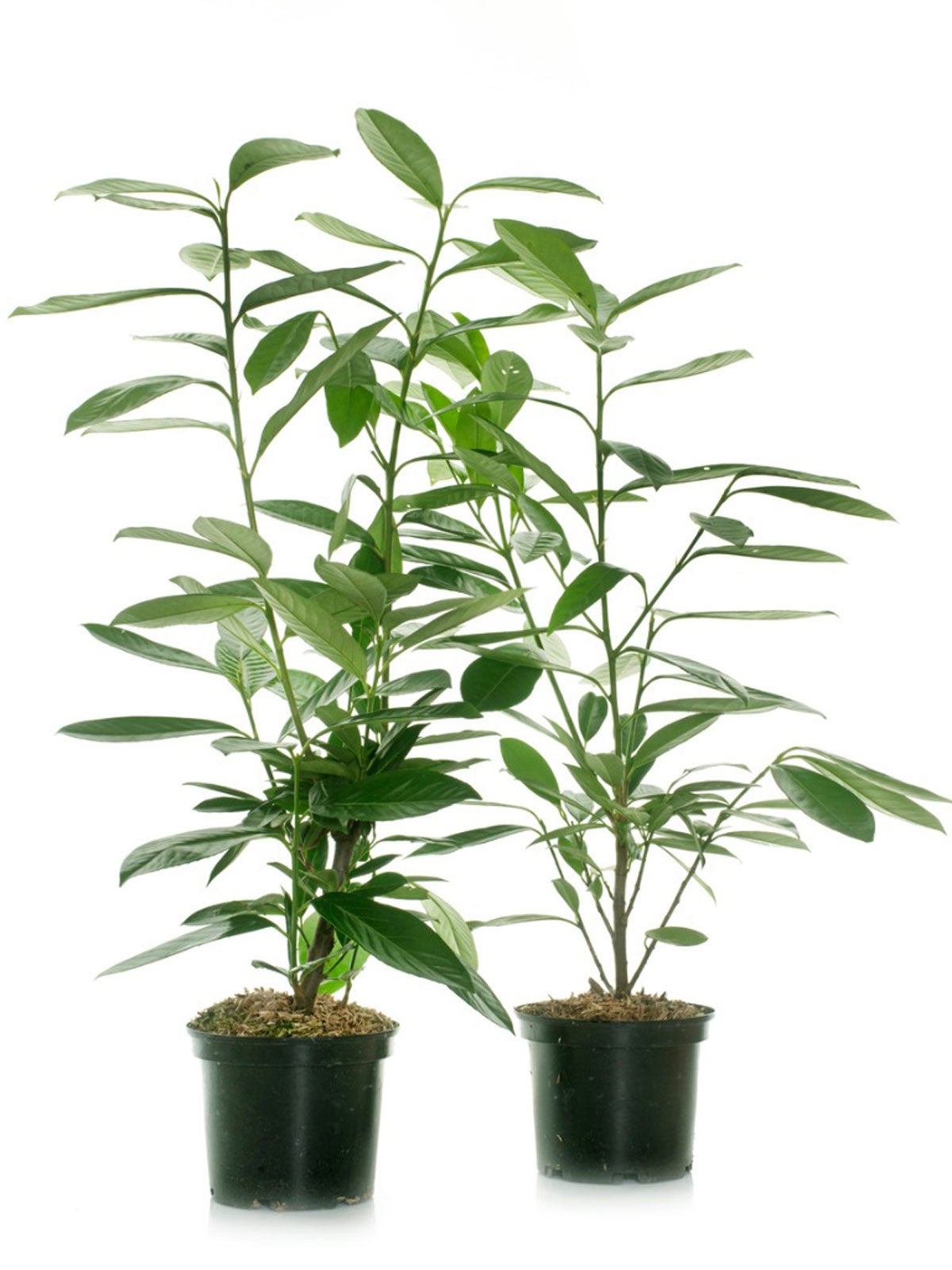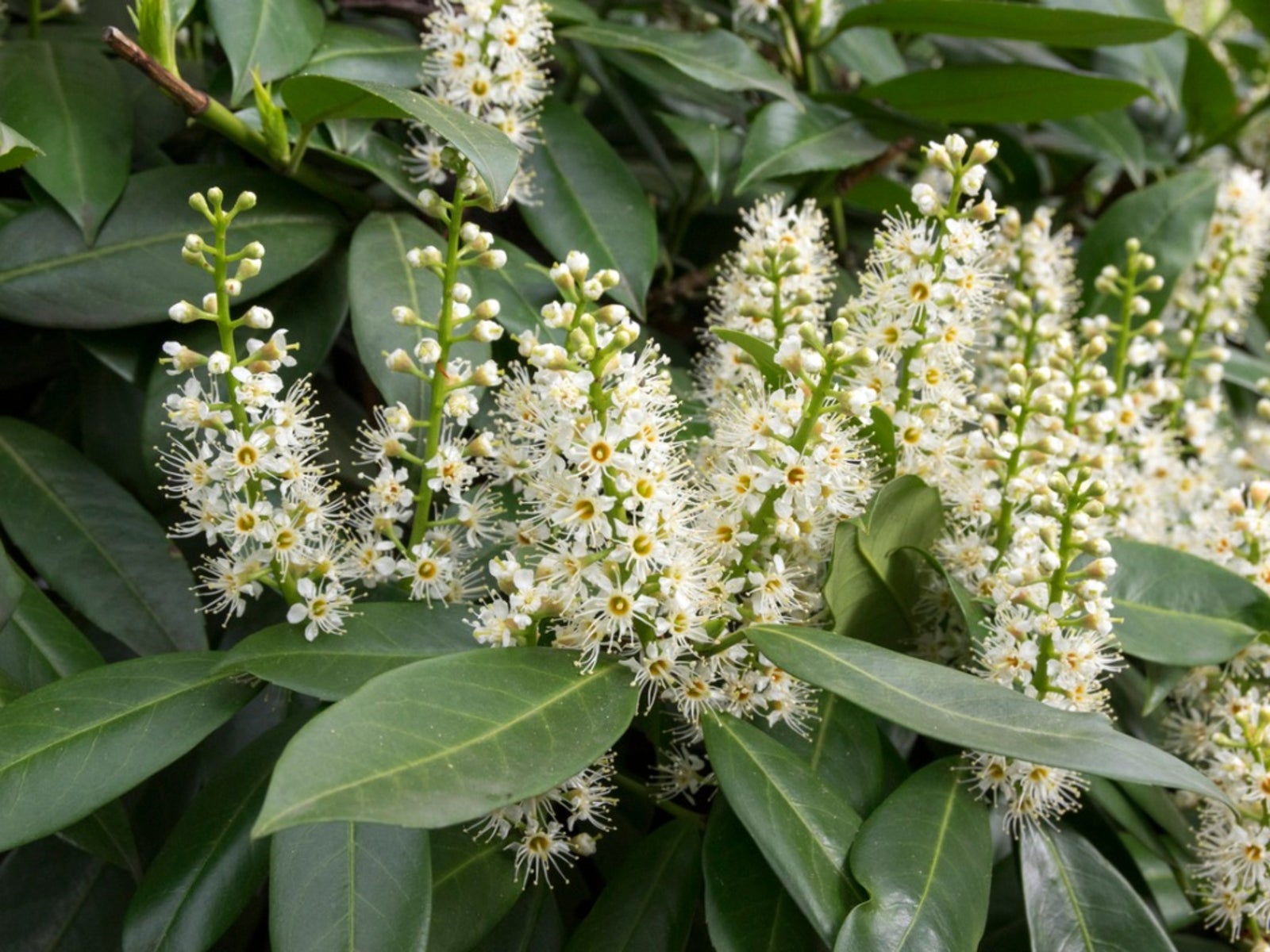English Laurel Care: Growing A Dwarf English Cherry Laurel


English laurel plants are evergreen, compact, dense, and small. They are low maintenance once established and make great low borders and edges. The flowers and berries are attractive too, and you’ll get more birds in your wildlife garden with them.
About Dwarf English Cherry Laurel
This plant, Prunus laurocerasus ‘Nana,’ goes by many common names: dwarf English laurel, dwarf cherry laurel, and Nana English laurel. Whatever you call it, this is a versatile and attractive evergreen shrub.
As the names suggest, it grows low and compact. The leaves are large and glossy green, and the flowers bloom white with a pretty fragrance. The cherry in the name is for the berries. They begin green, turn bright red, and finally black. English laurel plants are hardy in USDA zones 7 through 9.
English Laurel Landscape Use
As a compact shrub that grows low and fills in densely with leaves, this is an ideal border plant. Anywhere you need a low hedge or an edge for a bed or walkway, dwarf English laurel is a great choice.
You can also grow it in a container and trim and shape it like a topiary. Birds love this shrub, so it’s great for wildlife gardens and dwarf cherry laurel also does well in areas with urban pollution and salty air.
English Laurel Care
English laurel is pretty easy to care for once you have it established. It does prefer rich soil, so before planting dwarf English laurel, amend the soil with some compost. Make sure it will get some sun, but partial shade is fine.
Water the shrubs daily or every few days until they get established and then weekly or as needed depending on rain conditions. For the first growing season, water deeply to help the roots grow and establish.
Gardening tips, videos, info and more delivered right to your inbox!
Sign up for the Gardening Know How newsletter today and receive a free copy of our e-book "How to Grow Delicious Tomatoes".
Dwarf English laurel grows slowly, so although it will need occasional trimming and pruning, you won’t need to do it often. The best pruning time is in the spring after flowering. Early spring is also a good time to fertilize this shrub and once a year is adequate.

Mary Ellen Ellis has been gardening for over 20 years. With degrees in Chemistry and Biology, Mary Ellen's specialties are flowers, native plants, and herbs.
-
 Looking For Plants To Give You The Soft And Fuzzies? Try These 5 Fuzzy Leaf Plant Options
Looking For Plants To Give You The Soft And Fuzzies? Try These 5 Fuzzy Leaf Plant OptionsLovers of texture, drama, silver foliage and tactile plants will adore these special sensory garden additions. These fuzzy leaf plant options will leave you all aglow
By Susan Albert
-
 Get Ready For A Summer Of Hummers! Grow These Full Sun Hummingbird Plants and Flowers
Get Ready For A Summer Of Hummers! Grow These Full Sun Hummingbird Plants and FlowersIf you’re lucky enough to enjoy a sunny backyard, make sure you are maxing out on your pollinator opportunities and grow these full sun hummingbird plants and flowers
By Tonya Barnett
-
 Fertilizing Cherry Laurels – How Much Fertilizer Do Cherry Laurels Need
Fertilizing Cherry Laurels – How Much Fertilizer Do Cherry Laurels NeedIn order for cherry laurel to perform well in the landscape, it does require maintenance such as regular pruning and fertilizing. In this article, we will discuss properly fertilizing cherry laurels. Click to learn how to fertilize a cherry laurel shrub.
By Darcy Larum
-
 Cherry Laurel Shrubs: Tips On How And When To Plant Cherry Laurel
Cherry Laurel Shrubs: Tips On How And When To Plant Cherry LaurelThere?s nothing nearly as pretty in the spring as a blossoming cherry laurel plant. They make excellent additions to just about any landscape, filling the air with intoxicating aromas. Learn more about cherry laurel here.
By Susan Patterson